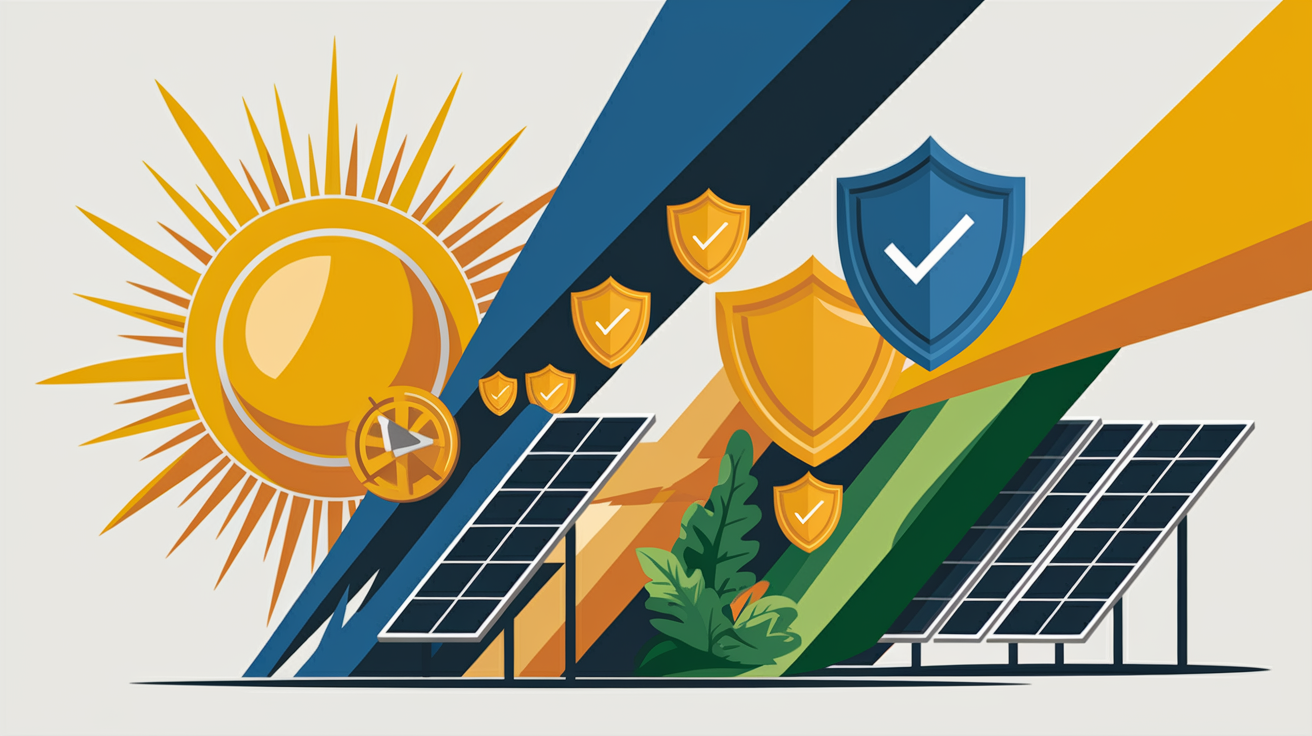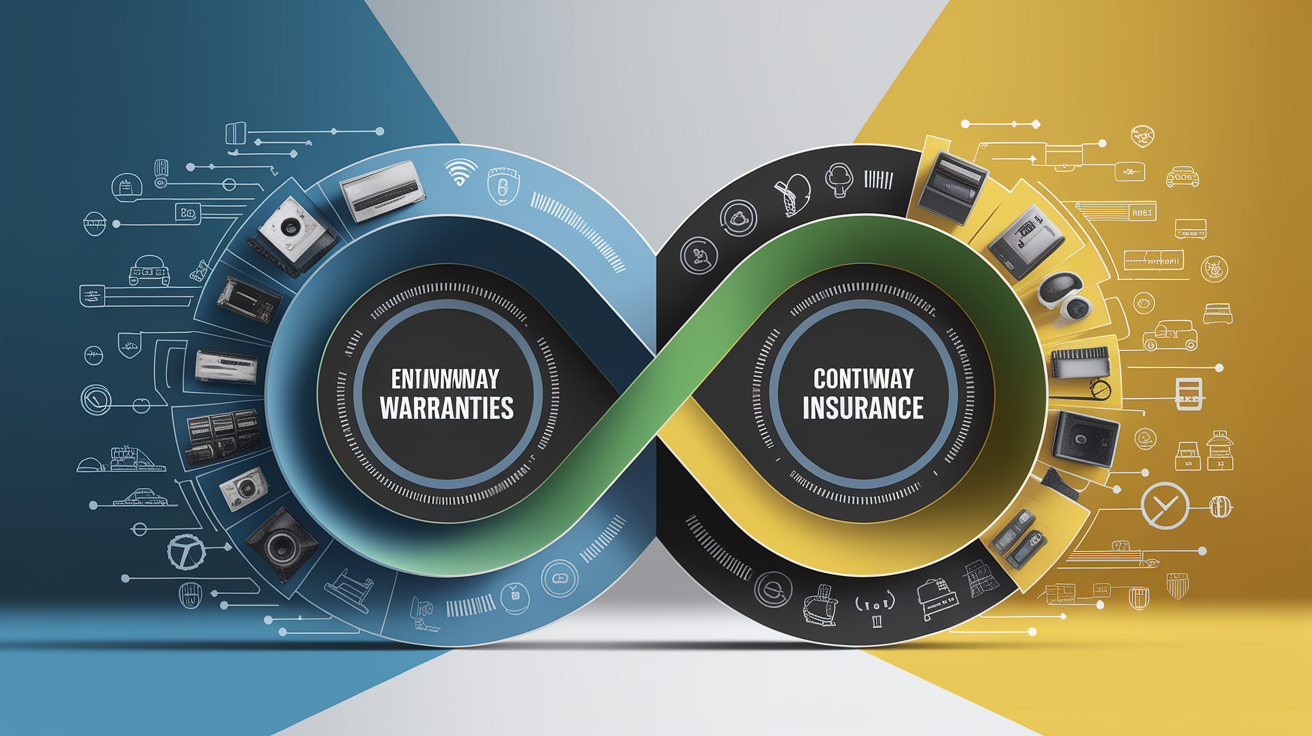Solar Warranties and Insurance Explained: Protect Your Investment
Powering Peace of Mind
Installing a solar energy system is more than a sustainability choice—it’s a long-term investment in predictable energy costs and reduced environmental impact. But like any major asset, photovoltaic systems face risks over their operating life. Strong warranty coverage and appropriate insurance make the difference between a smooth, predictable return and costly surprises. By understanding how solar warranties and insurance work individually and together, you can safeguard performance, protect your financial investment, and ensure your system’s longevity.

Understanding Solar Warranties
A solar panel warranty is the manufacturer’s and installer’s commitment to repair or replace components if they fail under certain conditions. These warranties fall into distinct categories, each addressing different aspects of solar equipment protection and system performance.
Performance Warranties
Performance warranties guarantee that your solar panels will produce a specified percentage of their original rated output over time, accounting for natural efficiency loss due to solar panel degradation. Typically:
- Industry standards ensure 80–84% of original power output after 25 years.
- Premium products may guarantee 88–92% retention.
- First-year degradation from Light Induced Degradation (LID) is around 3%, with 0.3–0.7% annual loss thereafter.
This performance guarantee is critical for calculating financial returns and ensuring the system delivers productive output for decades.

Product (Equipment) Warranties
A product warranty covers defects in materials or workmanship. Typically lasting 10–25 years, these warranties protect against manufacturing defects, faulty wiring within panels, or premature equipment failure. If warranted components fail, the manufacturer is obligated to repair or replace them at no cost to you.
Installation Warranties
Some installers provide additional installation warranty coverage, ensuring the workmanship of the system setup itself. This protects against issues like faulty mounting or improper electrical connections—factors that can compromise both solar system coverage and safety.
Demystifying Solar Insurance
While warranties protect against manufacturer defects and assured output, solar insurance covers the risks warranties leave out. Solar insurance policies safeguard your investment from external damage and liability.

Coverage often includes:
- Weather damage: hail, high winds, lightning, and fire.
- Theft or vandalism resulting in equipment replacement.
- Accidental physical damage not related to manufacturing faults.
- Solar system liability for injuries or third-party property damage.
Many homeowners add homeowners insurance endorsements for their photovoltaic systems, while commercial installations may require specialized renewable energy insurance. Unlike warranties, insurance typically involves premiums and deductibles but offers far broader protection against unpredictable events.
How Warranties and Insurance Work Together
Think of solar warranties as a shield against built-in faults and performance failures, while insurance coverage acts as a safety net against external hazards and unforeseen accidents.

- Warranty example: A manufacturer warranty replaces panels that develop microcracks due to a latent defect.
- Insurance example: A storm damages panels with flying debris—insurance pays for repairs.
When combined, both create a comprehensive solar panel protection plan that supports system performance, minimizes downtime, and reduces out-of-pocket costs over the solar equipment lifespan.
Choosing the Right Coverage
The best investment protection comes from pairing robust warranties with tailored insurance. When evaluating options:
- Review warranty documentation carefully—note coverage length, performance guarantees, and claim procedures.
- Opt for high-quality equipment with longer manufacturer warranty terms and strong degradation guarantees.
- Confirm whether warranties are transferable if you sell your home—some have warranty transfer restrictions.
- Ensure your installer offers a workmanship or solar installation guarantee in addition to the manufacturer warranty.
- Assess insurance premiums, coverage exclusions, and deductibles before choosing a policy.
Combining a trusted photovoltaic warranty with an appropriate insurance plan ensures you are covered from both expected wear and unexpected damage. This dual-layer approach is especially important for systems financed through solar financing programs, where system downtime directly impacts ROI.
Shining a Bright Future
From performance guarantees to weather damage coverage, understanding the interplay between warranties and insurance empowers solar system owners to protect both their assets and their financial returns. By selecting high-quality products, verifying installation workmanship safeguards, and investing in tailored solar panel insurance, you can confidently maximize your system’s value over decades of operation.
The path forward is clear: combine robust, well-defined manufacturer warranties with comprehensive renewable energy insurance. This strategy delivers peace of mind, ensures energy production targets are met, and keeps your clean energy investment generating value—year after year.







